Commentary 11 Mar 2013 02:09 am
European Animation
I know I’ve written about some of this stuff before (repeatedly), and I hope my take on it here is a bit different. At least I’m leading somewhere different, so please have a bit of patience with the opening.
- When I was a kid, animation was in the dark ages for the general public. By that, I mean there wasn’t a hell of a lot of material available to allow you to know how it was done or learn how to do it. There were maybe a dozen or so books available.
- -
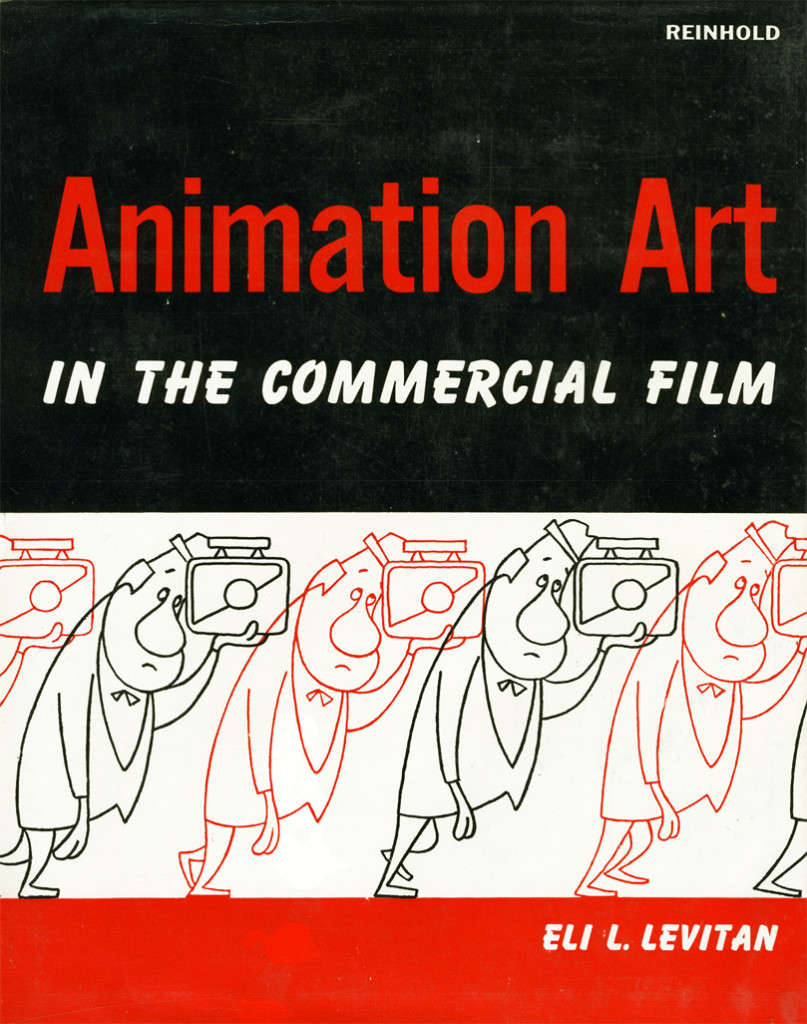 Of course the 40s Rob’t D. Feild book, The Art of Walt Disney. Some great information but not many illustrations. What are there are GREAT.
Of course the 40s Rob’t D. Feild book, The Art of Walt Disney. Some great information but not many illustrations. What are there are GREAT.
- The Preston Blair book, Animation, good and cheap. Very helpful for an amateur like me.
- Halas and Manvell‘s The Technique of Film Animation had more to do with animation as done in Europe, but it is extraordinarily helpful.
- Eli Levitan, an animation cameraman, had written several books. Animation Art in the Commercial Film is one of the better books.
There were a few others. My local library had them all, and I borrowed them endlessly and just about memorized them all. I owned the Preston Blair book (of course and my parents bought the brand new Bob Thomas Art of Animation for me Christmas 1958.
On ABC you had the Disneyland TV show which became The Wonderful World of Color when it moved to NBC. The Mighty Mouse Show was the staple on Saturday morning. Local channels featured Popeye and B&W Warner Bros cartoons.
I was completely intrigued with some silent cartoons that were run on the local ABC affiliate on early Saturday mornings. Every once in a while a sound Van Buren cartoon would pop up or a Harman-Ising MGM cartoon..
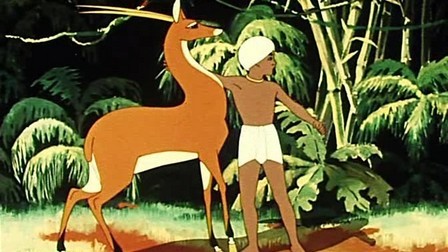 The show that also intrigued me was this horrible “Big Time Circus” starring Claude Kirschner (normally a VO announcer) as a ringmaster who talked to a $5 clown hand-puppet named “Clowny.” They showed cartoons, some B&W Terrytoons with Barker Bill and other early 30s things. They also showed a lot of foreign cartoons badly dubbed into English. They even had Russian features like The Golden Antelope serialized. They had a horrible title on the top of the film and a “The End” title pasted onto the end of the film. I used to tune in to see these B&W European and Russian cartoons. They moved so differently from what I was used to with the cartoons from the US. At 12, I could definitely see the difference and watched closely.
The show that also intrigued me was this horrible “Big Time Circus” starring Claude Kirschner (normally a VO announcer) as a ringmaster who talked to a $5 clown hand-puppet named “Clowny.” They showed cartoons, some B&W Terrytoons with Barker Bill and other early 30s things. They also showed a lot of foreign cartoons badly dubbed into English. They even had Russian features like The Golden Antelope serialized. They had a horrible title on the top of the film and a “The End” title pasted onto the end of the film. I used to tune in to see these B&W European and Russian cartoons. They moved so differently from what I was used to with the cartoons from the US. At 12, I could definitely see the difference and watched closely.
When I started collecting 16mm films I picked up a bunch of these shorts. The timing didn’t get any better.
On my second day at the Hubley Studio, I met the notorious Tissa David who dug into me quickly for my bad inbetweening. She offered to teach me after hours, which I certainly jumped to accept. In that first contact with her, I mentioned that I had a potential job offer from Richard Williams and I might go to England. She immediately said to me, “Oh, please don’t go there. Stay here. Only the Americans know how to animate properly.” After all those years of watching Russian and European cartoons, I understood what she was saying. (I was also working for my real hero, John Hubley, so I had no real plans to go anywhere.) Dick Williams came to me a couple of years later with Raggedy Ann. By then, I was knowledgeable enough to run the Asst. & Inbtwng dept – about 100-150 people.
But then Dick Williams was changing everything. He was teaching his people in England how to animate the way Disney people did it. He brought those people into his studio to teach: Art Babbitt, Ken Harris, John Hubley, Grim Natwick, and others. I believe Williams changed animation throughout Europe. Mind you, the problems of all those years of history is still there, but it’s enormously better.
What do I call “European Animation”? Well, it’s all about the timing. The characters often move at such an even speed that there is no sense of weight or real character movement. Basically, all characters move the same. The Golden Antelope is all rotoscoped, so the movement is on ones and all traced off the live action. You can tell when it’s not; there’s a sameness in the motion. It’s almost like there are no extremes just motion.
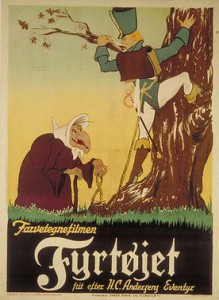 In Europe’s first attempt to imitate the US in a feature, The Tinderbox a 1946 film from Denmark, they were obviously trying to imitate the Fleischers of Gulliver’s Travels. Wild distortions and odd extremes but a lot of the evenly spaced timing. Consequently, with the distorted extremes moving in and out of position at an even pace, it’s doubly peculiar.
In Europe’s first attempt to imitate the US in a feature, The Tinderbox a 1946 film from Denmark, they were obviously trying to imitate the Fleischers of Gulliver’s Travels. Wild distortions and odd extremes but a lot of the evenly spaced timing. Consequently, with the distorted extremes moving in and out of position at an even pace, it’s doubly peculiar.
Halas and Batchelor‘s Animal Farm is so lethargic in its movement, it’s difficult to watch. However, whenever a Harold Whitaker scene pops up, it’s something to study. The guy was a fine animator. His work definitely sands out. He came from the Anson Dyer Studio, and had somehow learned to animate in the US methodology.
The Disney studio was having its effect , though as animators such as Borge Ring pretty much taught himself to go well beyond the basics of he European mold. He was close with a number of the Disney animators and studied Disney films religiously. His own personal style is definitely constructed from the US mold.
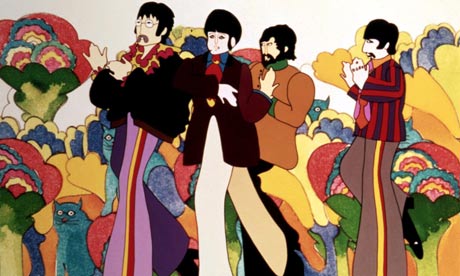 Even through The Yellow Submarine (1968), you see this flat style of animation. Of course, with the more graphic style of George Dunning‘s feature, the even pacing is better hidden in the mood of the piece.There’s also a lot of music that hides the timing problems.
Even through The Yellow Submarine (1968), you see this flat style of animation. Of course, with the more graphic style of George Dunning‘s feature, the even pacing is better hidden in the mood of the piece.There’s also a lot of music that hides the timing problems.
After Dick Williams, began his effort to alter the look of work coming out his studio, there was a big change in the look of work coming from all over Europe. Sure they slipped into and out of the old school of animation, but now they had learned from Art Babbitt and Ken Harris. (I wish they’d had more of Grim Natwick.) Take a look at the marvelous animation done for Bruno Bozzetto in the Ravel Bolero section of his 1977 feature, Allegro Non Troppo. To some extent, now, the best animation worldwide is coming out of England and France, especially from the younger animators.
So let’s take a look at the differences between the two styles..
- The best of the US style can be seen in those dwarfs in Snow White or the Siamese cat song in Lady & the Tramp or Scar in The Lion King. It’s all in the timing.
- The European style is very obvious in Jiri Trnka‘s 2D animation as in The Four Musicians Of Bremen or Spring-heeled Jack. You can see it in about half of Sylvain Chomet‘s The illusionist (the other half was wonderfully done US style), or, as I’ve already written, Animal Farm – the entire movie.
The US tradition came directly from the wonderful work done mostly after hours at Disney’s studio in the 30′s. They learned how to time animation for weight, for mood, for expression and for balance. Bill Tytla, Marc Davis and Frank Thomas were brilliant at it (though they all did it). The word reached outside the Disney studio and others came into the fold: Ken Harris and Bobe Cannon, Grim Natwick and Rod Scribner, Jack Schnerk and Abe Levitow, Hal Ambro and Tissa David. There are another couple of hundred people I could include if we were naming names. These people all mastered their timing. They knew what they were doing and did it as planned. The animation never does what IT wants to do, but it is controlled by the animator and his (her) timing.
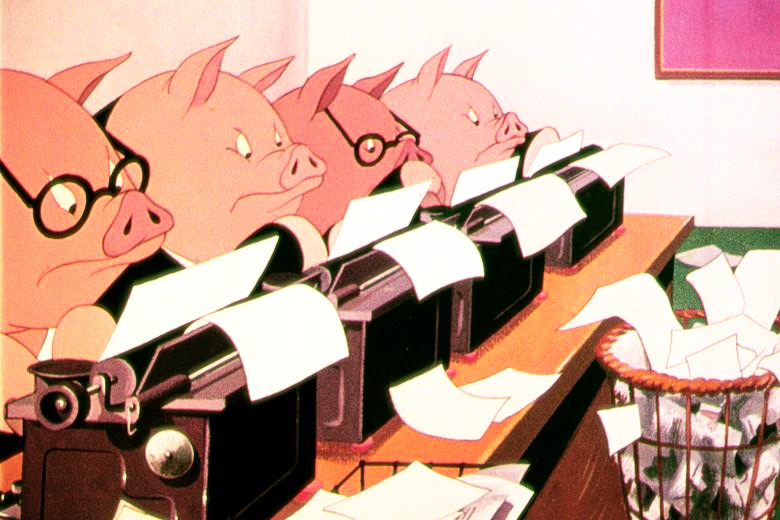 The European style is a very different animal. The timing is flat. It’s usually even paced and moves robotically forward, not always by going in a straight line. The weight is always soft; the emotion is almost nil. The drawings are often beautiful, but there’s no real strength behind that movement.
The European style is a very different animal. The timing is flat. It’s usually even paced and moves robotically forward, not always by going in a straight line. The weight is always soft; the emotion is almost nil. The drawings are often beautiful, but there’s no real strength behind that movement.
Things have changed quite a bit since the advent of Richard Williams and his work, but even there I see it at times. In Dick’s work, I mean, I sometimes see it. (Not surprising since I infrequently see it in Art Babbitt‘s animation. – and lest you think I’m biased, I often see it in my own work and have to rework it. (I’m not trying to hurt anyone here, I’m just reporting what I sense and see and feel.) Just talkin’ animation here. It’s basic and can so easily be bypassed. Animation is ALL ABOUT the timing. Norm Ferguson couldn’t draw very well at all, but he was one of the GREAT animators of all time. There was no even-paced timing in his makeup; the same has to be said of Tytla or Grim Natwick. Babbitt did do it. He was one of our great animators, but he infrequently paced his work in a very dull way. I could give you examples, but I won’t look for yourself, because when he’s good, he’s brilliant. Take the scene he did in The Thief and the Cobbler where the evil Vizier, Zig Zag, shuffles the playing cards.
A great example of what I’m talking about has all to do with Tom & Jerry. Take a look at some of those produced by Gene Deitch out of Czecheslovakia in the early 60s. Don’t compare this with the fully-animated shorts produced by Hanna & Barbera at MGM. No, compare it to the films done by Jack Kinney using a pickup studio. Most of the staff was free lance California employees. Turks without a space to work in the studio. Those Kinney films, badly animated though they are, are pure US-styled animation. The Deitch films are equally, poorly animated, but these also are animated with a European staff that animated the way a European would. The timing is rigidly even in its pacing.
You often get that European feel in the cgi work done today.
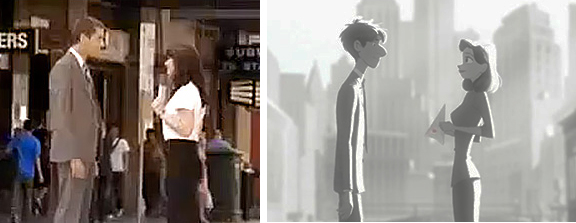
I can’t tell you how many times I’ve seen scenes where things suddenly go slack and move, seemingly, of their own accord in cg films. Perhaps the two arms will complete a motion that was started by an animator, and (s)he will allow the rest of the motion continue on its own to a final rest stop. It’s not animation anymore, it’s just a completion. I do quite dislike this when and if I see it. (Thought, admittedly, too often I’m not paying attention enough.) There’s a scene somewhere in Paperman where the male, standing in profile, has his two arms moving forward to a rest. They move at exactly the same speed, doing exactly the same thing, and it bothers me. Tissa certainly would have scolded me for allowing such a move to happen. I have to hope and believe that that’s what the animator wanted.
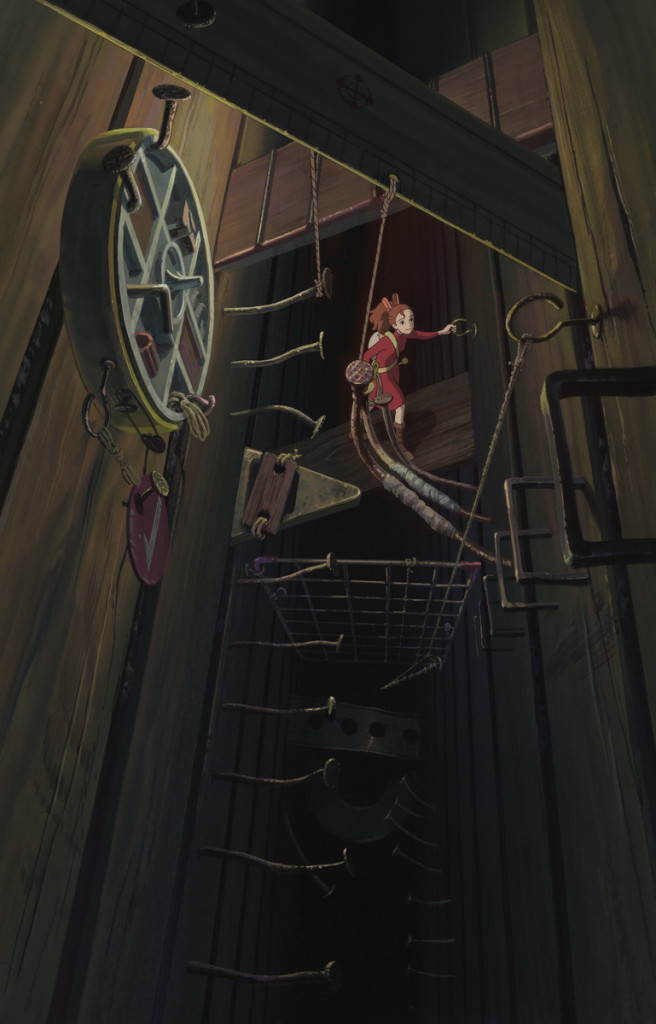 I had actually intended to keep going. One can’t really just say US and European animation styles. After all, there’s also the work out of Asia. The Japanese market, of course, is very different than the rest, and, thanks to what Miyazaki has been doing and his success in doing it, things are changing radically. Where he once blended in with the Anime animation that was all present, things are now changing to more of an emotional, Western appeal. My Neighbor Totoro started something, that changed wildly when he did Spirited Away and Ponyo. When I saw The Secret World of Arrietty, I knew things had changed completely. There was real character animation on the screen. One character was different from the next, and a lot of it had to do with the movement.
I had actually intended to keep going. One can’t really just say US and European animation styles. After all, there’s also the work out of Asia. The Japanese market, of course, is very different than the rest, and, thanks to what Miyazaki has been doing and his success in doing it, things are changing radically. Where he once blended in with the Anime animation that was all present, things are now changing to more of an emotional, Western appeal. My Neighbor Totoro started something, that changed wildly when he did Spirited Away and Ponyo. When I saw The Secret World of Arrietty, I knew things had changed completely. There was real character animation on the screen. One character was different from the next, and a lot of it had to do with the movement.
I was also fascinated with the work of Satoshi Kon, before his untimely death. His work was growing enormously with each and every film. The movies he made were adult in every sense of the word, and they were beautifully constructed, drawn and animated. I still go back to watch copies of his films. ________“Arrietty”
I was going to write about Katsuhiro Ôtomo, but I realize I’ve taken a sidestep. These are directors, and this article is about animators. In short, there is an Eastern style, and I’m glad to see that because of a couple of directors, they’re doing thier own take on the US version of animation character developement. It’s good to see it happening.
Essentially, the world is becoming smaller. Global animation styles are settling in, and I hope there will be a 2D animation so that the job can be complete in a few more years.

on 11 Mar 2013 at 1:21 pm 1.anik said …
Your analysis of European vs. US animation is very interesting. Of course, I haven’t studied the examples in such detail as you have, but I have the feeling that it comes from different attitudes about filmmaking in general, not only animation timing. European films tend to follow more what the real life is, in their subjects, characters, stories, pacing, etc. It’s more of a commentary on the real life. American movies are created with a goal to be as entertaining as possible, full of drama, exaggeration, excitement, color, speed and impact, with little concern about how believable/applicable to real life it all feels. So for American audiences European cinema (including animation) often looks kind of heavy, slow and dull, and for European audiences American films often feel (or used to feel) a bit like circus, with everything bright, loud and exaggerated to an unrealistic extreme. Maybe the difference in animation timing styles you are describing comes from the same place – it’s unnatural for Europeans to push it to the extreme, they tend to keep it soft and closer to how real objects move, without much exaggeration for dramatic effect.
on 11 Mar 2013 at 1:48 pm 2.Michael said …
our analysis is quite good and certainly accurate. That would cover styles such as that used in ANIMAL FARM or even some of the Russian films. I also think there is an attempt by Americans to hit extremes harder making it broader and more entertaining in their eyes. This, of course, is now being adapted by Europeans as well as Asians creating, essentially, a more global style. On size fits all. Of course, it’s all in how the style is used by the animator (or studio if there is a specific plan overall for the movement style.) A gentleness settles in nicely in many cases. This is something I, personally, have always aimed to do. Your style, Anik, certainly fits this mode. It’s a very personal and delicate style. It reminds me a bit of the feeling of Kai Pindal’s work, though he most definitely accents his extremes more. This will always be my preference over the harsher style of most animators today.
on 11 Mar 2013 at 3:06 pm 3.anik said …
Thank you Michael. I am learning a lot from Splog!
on 11 Mar 2013 at 5:30 pm 4.Teodor Ajduk said …
I think that the craft is in question – not geographical origin.
In my place ‘The Preston Blair book’ was considered foolish by artists…except for me.
Also, In my place my generation grew up with American cartoons,European and Russian features equally.
/Russian features can be found on the tube, they are perfect for lovers of fairy tales/.
Today, after these social changes, many people were shocked by this unpeable animated tv shows on tv,.
——————–
My attitude about paperman is that
Anyone who praised technology of Paperman deserves green screen on facebook profile and Disney announcement that they have no 2D animated projects.
I believed that cheaper, intuitive, way of working will save 2D animation…but, it did not happen-they made paperman.
I can say for that kind of artists only: Welcome to the world of 2D animators.
on 11 Mar 2013 at 7:20 pm 5.Michael said …
Great comments, Teodor. Thank you.
on 12 Mar 2013 at 1:58 am 6.Nat said …
I believe it is about the balance between the two extremes. You don’t want to imitate exactly what Disney does in terms of character animation, but it is important to try to avoid stiffness. I liked your example of Studio Ghibli and Satoshi Kon. They both show how to create ‘simpler’ character animation on a budget that manages to be both appealing and unique.
on 12 Mar 2013 at 7:22 pm 7.Kevin Hogan said …
I definitely see what you are saying with American Animation vs. European Animation. There is an overly conscious feeling to the animation in many foreign markets- As if the animator is constantly aware that they are animating, as opposed to animating inside the character’s head.
I must admit, however, that I have always somewhat enjoyed Russian animation in particular. The rotoscoped/ all-on-ones animation feels somewhat dreamlike or surreal when performed on cute and cartoony looking characters. Much Russian animation, such as The Golden Antelope, reminds me of Windsor McKay’s later Rarebit films- very heavy, and as if from a creepy dream.
on 13 Mar 2013 at 12:40 am 8.GW said …
I’m a few days late, but I checked numerous films to see how accurate this was in regards to Russian animation. I’m astounded. It seems it was even true before Stalin sent the industry into socialist realism. But in spite of your criticism of the even pacing being true, the part about it being unemotional and robotic isn’t necessarily so. If you look at Boris Dezhkin’s cartoons like An Unusual Match and Shaybu! Shaybu! you’ll see that the standardized pacing is uptempo and very cartoony. In The Snow Queen I see characters of both kinds.
Since you barely touched on 3D computer animation, I’d like to point out the film Rua das Tulipas. The characters are pretty stiff, but in spite of that there’s some great subtle movement that’s so subtle it can only be done in CG.
This was a very intelligently written post and it will keep me thinking and observing for a long time.
on 13 Mar 2013 at 3:37 pm 9.Michael said …
There were a few cases of Russian animators hijacking Disney films that made it into the country (since they didn’t honor our copyright laws and we didn’t honor theirs.) – particularly with Snow White. This gave those few animators the opportunity of studying what the Disney people were doing differently. Some few changed to use the information they learned.
This same thing was notable when the amateur animators in the earliest days at Zagreb stole a copy of the live action – animation mixed film, The Four Poster. For five days those few animators ran that print into the ground studying what John Hubley and others had done in their new style of animation. The print was returned on the fifth day, and Zagreb became a world class studio in the early sixties.
on 13 Mar 2013 at 5:43 pm 10.Liim Lsan said …
You can see very well once you look at it that American cartooning grew out of Vaudeville and joke-telling, both of which require quite varied pace. European animation grew out of printmaking and puppetry, for both of which a stately and subtle motion is valued. THANKS A MILLION for this post. Answers so many questions I had.
There’s all sorts of things that Europe does a wee bit too much – Amblimation, Halas and Batchelor, Martin Rosen, etc. have a severe problem with anemic watercolor backgrounds, it must be a British thing.
Zagreb film actually out-UPA’ed UPA several times in modernist stuff (particularly Dusan Vukotic), IMHO, because the drawings aren’t timed in a close to realistic manner. “Cow on the Moon” has incredibly stylized timing to match the characters.
This explains well why Paul Grimault’s work was best when the characters were designed in neoclassical fashion, to match the timing (Le Roi et L’Oiseau has much better synthesis of timing and atmosphere than L’Epouvantail does, which actually adds to the creepiness of the latter). I’ve always wondered why that is, thanks for pointing it out!
In contrast, Bruno Bozzetto’s timing has that same thrashing irony his plotlines have, and the films of his I’ve played for audiences generally get a better reaction than most other European films.
In recent years, the timing differences are much less, and some of the french pieces I’ve seen are much more diverse in timing’s sake (I’ll look for this one film of “The Lion and the Mouse,” told in angular silhouette, that I don’t think uses the same timing for any two scenes).
But there’s one thing I DO love to joke about, that my friends and I call the “Goeblins Check.” The character will swing a limb or head in one direction, to build up momentum, and about 4/5 of the way through, the momentum will suddenly make a 90-degree jerk upwards and drag the limb with it. It’s the strangest thing, but it’s all over “The Rabbi’s Cat,” all over “Persepolis,” all over most of the Goeblins student films I’ve seen these days. Given as how I nurtured myself through Tissa David’s animation for you and John Hubley, the force behind that weight is all the more weird. (Actually, Hubley’s independent output is a shining example of how you can have slow, stately, european motion and still have good acting and varied timing. If not for Emery Hawkins…)
on 13 Mar 2013 at 6:12 pm 11.Michael said …
You have some brilliant points there. I love what you said about Hubley, and to quite a degree I have to agree with you. Hubley never was one for timing; he left it all in the hands of the animator. When it was Bill Littlejohn or Tissa David, that was fine. When it was Chuck Harriton or Johnny Gentilella it was floundering and unsure. The sound track was everything.